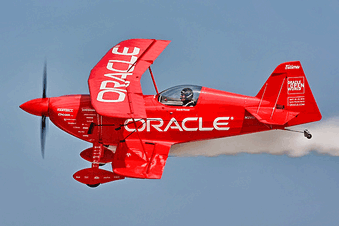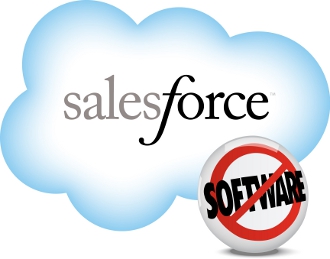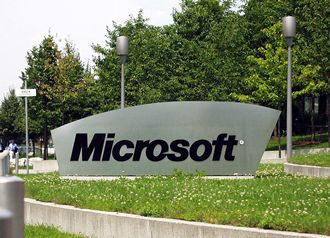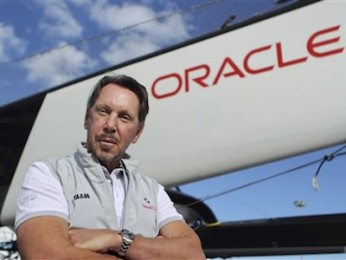 Oracle chairman and chief technology officer Larry Ellison unveiled X5, its fifth generation of Oracle’s engineered systems, to media and analysts at company headquarters on Wednesday afternoon.
Oracle chairman and chief technology officer Larry Ellison unveiled X5, its fifth generation of Oracle’s engineered systems, to media and analysts at company headquarters on Wednesday afternoon.
Ellison introduced the company’s X5 as “the future of the datacentre” based on Intel Xeon® E5-2600 v3 processor family (Haswell-EP with up to 32 cores) and support for high bandwidth NVM Express (NVMe) flash drives.
The X5-2, a 1U two socket server, is designed and optimised for running Oracle Database in a clustered configuration. Optional four NVMe drives can be used to accelerate Database performace via Smart Flash Cache. This server is targeted at high-density vitualization environments.
The X5-2L, a 2U platform, is targeted for single-node databases and enterprise storage applications. The supports up to 758GB of memory, and configured for a maximum of 50.4TB of direct attached storage.
Also announced was Oracle’s NVM Express (NVMe) design providing up to 6.4TB of hot-swappable flash providing 2.5X the data rate of older SAS3 SSD interface drives using PCIe Gen3 Small Form Factor NVM SSD drives (12Gb/s vs. 32Gb/s). NVM Express flash technology is optimized to accelerate Oracle Database using a feature called Database Smart Flash Cache. This feature keeps recently accessed data warm in flash storage, reducing the chance that the database needs to fetch the data from slower magnetic media that may be direct attached or resident on a NAS/SAN fabric. In addition to the high-bandwidth interface to the NVM Express SSDs, the flash technology itself has been engineered to be high-endurance and write-optimized for Oracle Database.
Ellison’s new “vision” entails connecting datacentres efficiently and at lowest cost to the cloud – “There has to be some degree of compatibility between the public cloud and your private datacentre”, Ellison said.
Ellison emphasised Oracle’s “new strategy” using Intel processors to compete for the two-socket core business. The new “Virtual Compute Appliance X5” converged infrastructure system, consists of compute servers and software defined networking.
That integration comes in the form of th Virtual Compute Appliance X5 converged infrastructure system, consisting of compute servers, software-defined networking and Oracle designed hardware. Ellison went on to highlight the company’s abilities in software defined configuration of server and storage networks on VCA, supporting infiniband internal networking with external connectivity provided by Ethernet and Fibre Channel to link with existing networks.
Included within the X5 product portfolio are Oracle’s Big Data Appliance for Hadoop and NoSQL big data jobs and Exalogic X5-2 for private clouds.
Ellison described Oracles Zero Data Loss Recovery Appliance capable of full data recovery with real-time “redo” transport and fully automated recovery functions, log re-examination with extraction of malicious transactions followed by re-entry of those processes again allows the appliance to be restored to any point in time.
Further the appliance, which can handle thousands of databases with backup connections to on-site datacentre, remote datacenters and cloud. “The big deal is it’s fully automated, so it’s easy to operate, and you never lose data. It’s a no brainer appliance as we have, “Ellison stated.
Ellison reminded the audience that “Oracle manufactures tests and supports all of these products in-house”, naming rivals Cisco, EMC, VMware, Microsoft and Red Hat hinting at more expensive and fragmented support by rivals. Further “One appliance alone can handle thousands of databases with potential backup connections to on-site datacentres, remote datacentres, and the cloud.” he said.
“The big deal is it’s fully automated, so it’s easy to operate, and you never lose data. It’s as a no-brainer appliance as we have,” Ellison remarked.
He further stressed Oracle has manufactured, tested, and support all these pieces in-house, calling out rivals Cisco, EMC, VMware, Microsoft, and Red Hat and hinting at more fragmented (not to mention expensive) deployment options. All X5 machines are available now.
TechEye Take
The rumor of the Intel invasion of Oracle has been circulating since OracleWorld 2012. This is a major shift for Oracle. The company’s management, currently in the midst of a “reinvention period”, includes the fact that Larry Ellison is executing a gradual accession plan as he moves toward retirement.
The X5 release is seen as one aspect of the company’s new strategy – one in which the company protects their private datacentre market base while adjusting to a world increasingly enveloped by the evolution of open hardware, software and the cloud. Ellison is a sharp toothed shark and Oracle is having a problem finding a way to replace his natural instincts – how this evolves is another one of those “only in the valley” stories.
It is looking like a very good year for Intel’s E5000 series though…,
 Salesforce has surprised the cocaine nose jobs of Wall Street by raising its full-year revenue forecast for the fourth time after reporting a quarterly adjusted profit above market expectations.
Salesforce has surprised the cocaine nose jobs of Wall Street by raising its full-year revenue forecast for the fourth time after reporting a quarterly adjusted profit above market expectations.
















